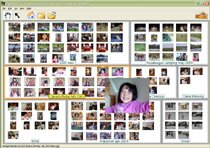Vision Foundation Models: Fine-Tuning Without Overfitting
When you’re fine-tuning vision foundation models, it’s easy to worry about overfitting and losing the benefits of those powerful pre-trained features. You need strategies that ensure your model adapts without forgetting its broader visual understanding. If you want to make your model both specialized and resilient, you’ll need to strike a careful balance—let’s see which techniques actually help you get there, and which pitfalls are best avoided.
Understanding Fine-Tuning in Machine Vision
Modern machine vision models demonstrate significant capabilities, but they frequently require fine-tuning to enhance performance on specialized tasks. Fine-tuning entails adapting a pre-trained model using a dataset that's relevant to a specific application, such as medical imaging or autonomous driving. This process can lead to significant improvements in performance metrics, potentially enhancing accuracy by as much as 20% while also reducing training duration.
The fine-tuning process typically involves modifying model parameters, which may include all layers or selectively targeting specific ones to optimize performance for a defined task. However, a key challenge in fine-tuning is the risk of overfitting, particularly when the available data is limited.
Overfitting can diminish the model's ability to generalize beyond the training dataset, which is a critical aspect of machine learning model performance.
To achieve effective fine-tuning, it's essential to balance the extent of parameter adjustments and the volume of training data, ensuring that the model retains its ability to generalize while meeting the specific needs of the application at hand. Careful management of these factors can result in improved model accuracy and performance in real-world conditions.
Strategies to Prevent Overfitting During Fine-Tuning
Overfitting is a common issue when fine-tuning machine vision models, as it can significantly impact the model's performance on unseen data. To mitigate overfitting, several strategies can be employed.
Data augmentation is one approach that creates variations of the training samples, which aids in enhancing the model's robustness and ability to generalize. Additionally, employing regularization techniques such as L2 regularization can discourage the model from learning overly complex patterns that may not translate well to new data.
Dropout is another effective strategy, as it helps prevent the model from becoming overly reliant on specific features.
Early stopping serves as a monitoring technique, allowing you to halt the training process when the model's performance on validation data begins to decline, thus preserving its generalization capabilities.
Selective fine-tuning, which involves updating only certain layers of pre-trained models, allows the retention of previously learned knowledge while also reducing the risk of overfitting.
Selecting and Adapting Pre-Trained Models
To effectively fine-tune a vision foundation model, it's essential to select a pre-trained model that aligns closely with your particular task and target domain.
Begin by identifying pre-trained models whose architectures and training data correspond to your intended application. It's important to consider performance metrics that have been reported on relevant benchmarks to make an informed choice.
Parameter Efficient Fine-Tuning techniques can be employed to implement minimal, focused modifications to the model's layers, which helps to mitigate the risk of overfitting.
Selective fine-tuning, which involves updating only certain critical layers, allows for the retention of the model's general knowledge while still adapting to specific requirements.
Continuous validation during the fine-tuning process is crucial, as it enables you to promptly identify signs of overfitting and make necessary adjustments to your strategy or model selection.
Evaluating Performance and Ensuring Generalization
After selecting and adapting a suitable pre-trained vision foundation model, it's essential to evaluate its performance and generalization capabilities beyond the training dataset.
Begin the evaluation by utilizing key performance metrics such as accuracy, precision, recall, and F1-score to quantify the model's effectiveness.
When fine-tuning pre-trained models, it's crucial to implement strategies to prevent overfitting. Regularization techniques, including dropout and weight decay, can help mitigate this issue. Additionally, employing cross-validation can enhance the reliability of performance assessments by testing the model's consistency across various data splits.
To further improve generalization, incorporating data augmentation techniques can help expand and diversify the training dataset. This practice can lead to better performance on unseen data.
Utilizing early stopping during training—where the training process is halted once the validation score shows a decline—can help maintain model integrity and prevent excessive overfitting.
Practical Applications and Optimization Insights
Vision foundation models demonstrate strong average performance across various tasks; however, fine-tuning them for specific applications can often enhance their effectiveness. Research indicates that fine-tuning can yield performance improvements of up to 20% for targeted activities, even when relying on smaller datasets.
Incorporating data augmentation techniques can effectively increase the size of the dataset, which contributes to the model's robustness and helps mitigate risks of overfitting.
Additionally, methodologies such as early stopping and hyperparameter tuning are valuable for optimizing performance while maintaining efficient training times; training durations can be reduced significantly—potentially by up to 90%.
Maintaining thorough documentation of the fine-tuning process and any challenges encountered is advisable. This practice can aid in refining future optimization efforts, benefiting both individuals and teams involved in similar tasks.
Conclusion
When you’re fine-tuning vision foundation models, you don’t have to worry about overfitting if you apply the right strategies. Use data augmentation to diversify inputs, add regularization for stability, and leverage early stopping to prevent unnecessary training. Select pre-trained models wisely and keep evaluating your results. By following these practical steps, you’ll achieve robust, generalizable performance and set yourself up for real-world success with model deployment and ongoing optimization.



